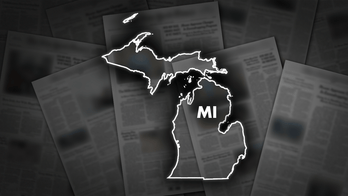
As a millennial having recently entered the workforce, I have experienced both the euphoria that permeated college campuses during Barack Obama’s 2008 campaign and his subsequent fall from grace amongst my peers.
In 2008, wide-eyed students projected onto Obama’s nebulous themes of “hope and change” their own dreams and aspirations, irrespective of Obama’s actual platform.
To my contemporaries, Obama’s themes of progress toward post-partisanship and racial harmony echoed their own drives for progress toward obtaining a degree and building lives and identities of their own.
The result was an historic turnout of young voters. 22 million Americans under the age of 30 voted in the 2008 presidential election; the turnout rate of 51% was the highest since 1992.
But for too many of these students and recent graduates, the only change they felt was when they moved in with their parents.
And now, an historically high percentage of young people are living at home: an Ohio State University study revealed that nearly a quarter of 20-34-year-olds are living with their parents, compared to 17% during the late 1970s recession.
A staggering 43% of 20-25-year-olds still live at home, including 30% in New York State.
These “boomerang children,” hit hardest during the Great Recession by a corporate culture of “last hired, first fired,” are nearly twice as likely as their independently-living peers to state that their financial situation is directly linked to their parents’.
The result of this failure to launch is a reversal of the 2008 enthusiasm gap, already evident by the results of the 2010 midterm elections.
In the 2010 cycle, 53% of voters ages 30 and older said that they gave a lot of thought to the midterm elections while just 31% of young voters said the same.
Nearly half of all voters younger than 30 who identified with the Democratic Party gave a lot of thought to the 2006 election. In 2010, that number fell to 27%.
The result was a 63-seat triumph for the Republican Party, the largest seat-change in the House of Representatives since 1948 and the largest pickup in a midterm election since 1938.
The enthusiasm gap has lingered into 2012.
Louisiana State University released a report last month called “What Happened to Hope and Change?” that found “consistent evidence that President Obama’s 2008 first-time voters are less supportive than other Obama voters, reflecting a decline in enthusiasm among a key voting bloc in the 2012 elections.”
According to a Gallup Poll released at the end of August, Obama leads Romney by 24 points, 58% to 34%, among voters ages 18-29, only 61% of whom plan on voting.
In contrast, 86% of votes over 65, who favor Mitt Romney 54% to 39%, stated that they will definitely vote.
Romney and Obama are statistically tied (46% to 45% in favor of Romney) among those 30 to 49 years of age, 80% of whom say they will definitely vote. Among the 50-to-64 age group, Romney leads 48% to 45%, with 86 percent of that cohort saying they will definitely vote.
In terms of voter enthusiasm, the youth vote is clearly the 2012 outlier. Team Obama has to worry that their lead amongst under-30 voters will be offset by their low turnout rate.
Paul Ryan summed up young voters’ frustration during his RNC acceptance speech, when he said, “college graduates should not have to live out their 20s in their childhood bedrooms, staring up at fading Obama posters and wondering when they can move out and get going with life. “
In 2008, Barack Obama’s upbeat if vague rhetoric mobilized young Americans, whose energy and efforts helped catapult him into the White House.
In 2012, the grim reality of the recession has set in for America’s youth. Their level of enthusiasm looks more like it did in 2010 and less like in did in 2008. And that’s bad news for the President.
David Laska is Special Assistant to Chairman Ed Cox of the New York Republican State Committee.
Follow us on twitter.com/foxnewslatino
Like us at facebook.com/foxnewslatino




